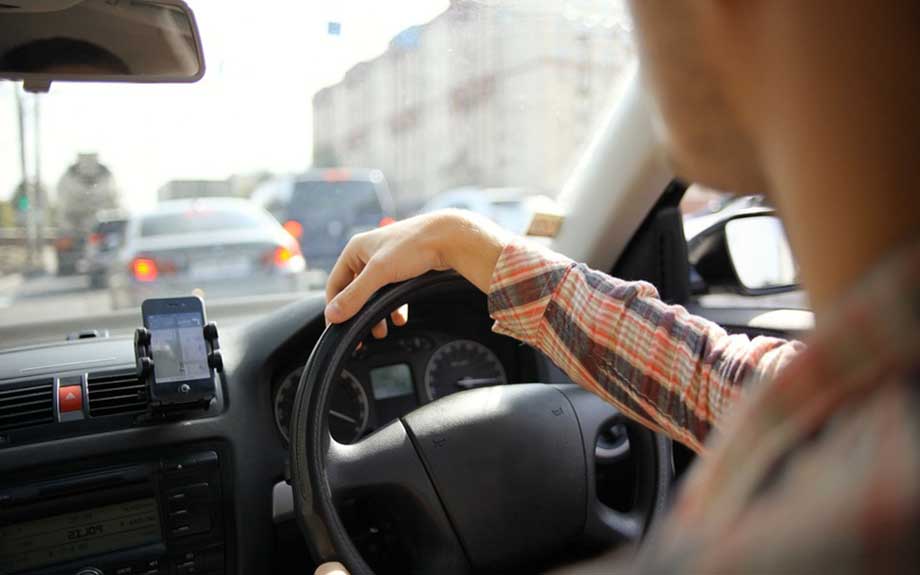Learning to Drive: Meeting Traffic
2021-11-24
Part 5 of the Learning to Drive Series, Meeting Traffic. This lesson will also cover how to proceed past Obstructions and determine whether or not you have enough Space to proceed. But first off, let's discuss queuing
Learning to Drive: Meeting a Queue
Since the UK are notorious 'queuers', let's start with how to appraoch and move in a traffic queue.
PERFECT QUEUING
- 1) Look Ahead to spot any stationary cars.
- 2) If the car ahead of you has not moved, they are probably queuing in traffic. Slowdown and stop behind them
- 3) When traffic is steadily moving, do not apply the handbrake. If traffic is stationary for more than 5 seconds, apply the handbrake. Keep car in 1st gear and at the biting point.
- 4) When traffic moves, release the handbrake if applied and slowly lift the clutch, lightly applying the accelerator to inch forward.
- 5) If you have to stop again, push down on the the clutch to prevent stalling.
- 6) Repeat until you have cleared traffic.
LEAST MEMORABLE STEP
Don't Coast - Coasting is when you allow the car to roll in neutral.Your examiner will mark you down if you are caught coasting. The car should always be in gear when waiting in traffic.
MOST MEMORABLE STEP
Spotting Traffic - A stationary car in the middle of the road is most likely waiting in traffic.
InsureLearnerDriver HELPFUL TIP
When you are Learning to Drive, practice looking through the windscreen of the car in front, to see when the car ahead of 'them' starts moving. When it starts moving, prepare yourself to move off. Early preparation will give you more time and feel less rushed when traffic starts moving.
Learning To Drive: Obstructions & Priority
Most roads have two flows of traffic, traffic you are Following and traffic Opposing you. Roads are designed to accommodate equal amounts of space for both flows of traffic. Both traffic flows should be able to continue without affecting one another. However, obstructions can cause both flows of traffic to meet.
Single Obstruction
When there is only one obstruction blocking the road. Whoever does not have the obstruction on their side is usually given priority.
If you have priority, then the oncoming traffic should wait for you to pass.
Note: Impatient drivers may ignore this rule. Be prepared for such behavior and don't assume you will always be given priority. Alternatively, some drivers may be courteous and afford you the priority.
Dual Obstructions
There may be occasions when there are two obstructions on both sides of the road. In this situation no one has priority. We would suggest, especially when you're Learning to Drive, to wait and allow the other car to pass.
Obstructions On Wide Roads
If the road is wide enough, there may be room for you and oncoming traffic to pass one another. The car with the obstruction on their side passes closest to the obstruction, whilst the other driver passes closest to the pavement.
Pulling In
If there are a large number of parked cars on your side of the road, you may have to drive in the centre or opposite side of the road to proceed.
In the event you meet traffic, you will need to find an appropriate space to pull in.
Note: Your instructor will likely inform you when to pull in. However, you will soon have to learn to do it independently.
PERFECT PULLING IN
- 1) Whilst driving, keep looking as far down the road as possible.
- 2) When a car appears, look along the left for a place to pull in.
Note: There should be space available where there is a dip in the pavement. Cars should not be parked here.
- 3) Once you have located a space, enter 1st gear and angle your car into the space.
- 4) Try to straighten up, if possible, so the car is Parallel with the other parked cars. Leave yourself enough room to pull out from the space, without reversing.
- 5) Keep your car at the biting point with the brake firmly applied.
- 6) When the car passes, do a 6 Point Check and pull back out. If there is not enough space for you to pull out, without touching the parked car in front, reverse back.
Note: When reversing, you will need to look out the back of the car, not in the rear view mirror.
LEAST MEMORABLE STEP
Looking Far Enough Ahead - You may forget to keep looking as far down the road as possible. If you don't, you may not spot oncoming traffic and miss an opportunity to pull in.
MOST MEMORABLE STEP
Reversing - Making contact with parked cars is a guaranteed fail on your driving test. If you are uncertain whether you can pull out without touching the parked car in front of you, reverse back.
InsureLearnerDriver HELPFUL TIP
If you have pulled into a space and a car flashes you forward, ignore them and wait.
See How Instructors Meet Traffic
Look Out For
Bends - Don't commit to passing obstructions on bends, as your ability to see oncoming traffic is impeded.
Traffic Calming Measures - These slow down the flow of traffic e.g. speed bumps & priority of way signs.
< Read Part 4 - Emerging From Junctions Read Part 6 - Making Progress >
'Learning to Drive' series - full lesson list
- Cockpit Drill
- Moving Off & Pulling Over
- Approaching Junctions
- Emerging at Junctions
- Making Progress
- Hazard Awareness

